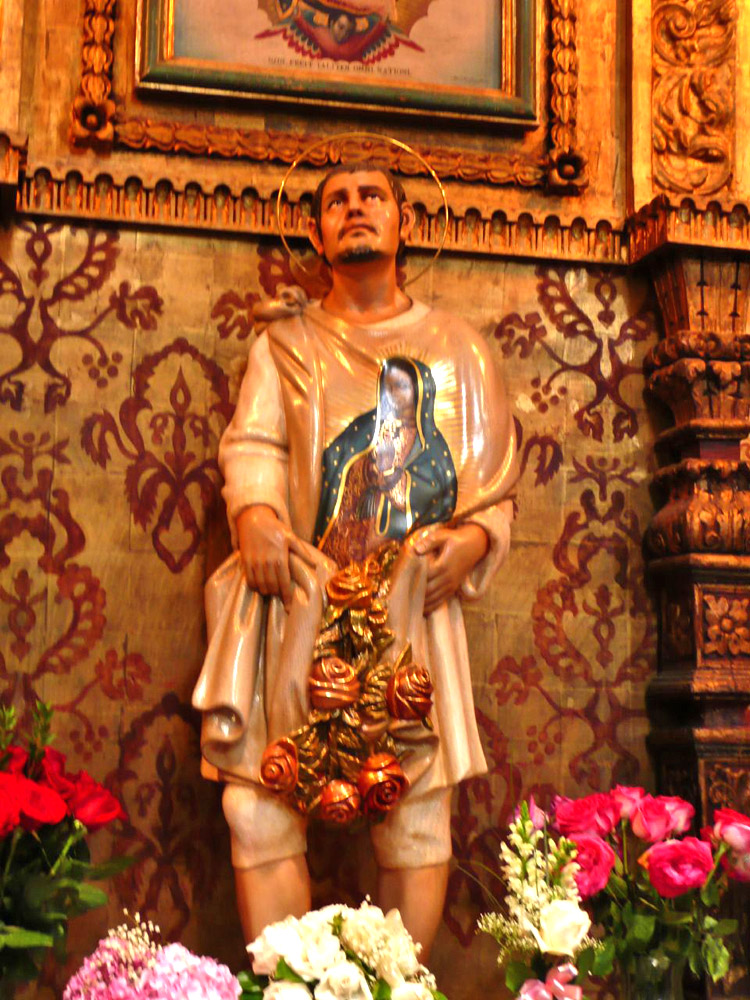
St. Juan Diego Cuauhtlatoatzin
20th century (est.)
Mission San Juan Capistrano, San Juan Capistrano, California
Born in 1474, Cuauhtlatoatzin was a middle-class member of the Chichimeca nation, which had been subsumed into the Aztec Empire in 1439. The Chichimeca had been introduced to a simple monotheism by their king, Nezhualcoyotl, in the 15th century, and this may have influenced Cuauhtlatoatzin's family to be among the first to accept the Christian faith of the Spaniards in 1524. He then took the Christian name Juan Diego.1
In December of 1521 Juan Diego informed the new Bishop of Mexico City that the Virgin Mary had appeared to him on Tepeyac Hill, near the city, and asked that a shrine be built there. According to the Nican Mopohua, the first account of these events, the bishop's incredulity was overcome at Juan Diego's next visit, when Juan opened his tilma or mantle. Not only was it filled with roses, surprising enough in winter, but on it was an image of the Virgin Mary as the Immaculate Conception.2 This is what is pictured in the image at left.
The image on the tilma came to be a powerful element in Mexican Catholicism, not least because of its connections with native culture. According the Vatican's official biography of Juan Diego, the wings of the angels on the image "are reminiscent of one of the major gods of the traditional religion of that area," and the black girdle is a traditional way to represent pregnancy.3
This saint's feast is on December 9.
View this image in full resolution.
Read more about Our Lady of Guadalupe.
Photographed at the mission by Claire Stracke, shared under Attribution-NonCommercial-ShareAlike license.